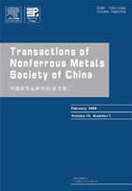Effects of operating parameters on size and distribution of bubbles in coarse-particle flotation column
(1. School of Minerals Processing and Bioengineering, Central South University, Changsha 410083, China;
2. State Key Laboratory of Mineral Processing Science and Technology, BGRIMM Technology Group, Beijing 100070, China)
2. State Key Laboratory of Mineral Processing Science and Technology, BGRIMM Technology Group, Beijing 100070, China)
Abstract: The size and distribution patterns of bubbles within a laboratory-scale coarse-particle flotation column were examined using a high-speed camera-based dynamic measurement system. The effects of operational parameters such as superficial water velocity, air-flow rate, and frother dosage on bubble-size and distribution characteristics were investigated. This study aims to provide theoretical support for enabling fluidized-bed flotation within coarse-particle flotation columns. The results show that negative pressure for air inspiratory and bubble formation is generated by passing a high-speed jet through a throat, and the greatest number of bubbles are observed under natural inspiratory state at an air-liquid ratio of 1?3-1?2.5. Increasing the air-flow rate transforms the bubble diameter distribution from a peaked distribution to a more uniform distribution. Furthermore, the frother narrows the range of bubble-size distribution. A positive correlation exists between the bubble Sauter diameter and air-flow rate, with the bubble Sauter diameter bearing a negative correlation with the superficial water velocity and frother concentration.
Key words: coarse-particle flotation; fluidized-bed flotation; bubble size; superficial water velocity

